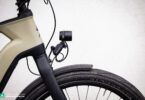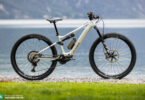With the Performance Line SX, German tech colossus Bosch want to shake up the Light eMTB segment. And while the Performance SX is both bigger and heavier than its direct competitors from TQ and FAZUA, Bosch have a few clever tricks up their sleeve! In this test, we’ll find out what the Performance Line SX drive is capable of and why it doesn’t compete just with the TQ and FAZUA in this group test, but also with its bigger brother, the Performance CX!
This review forms part of our big ebike motor comparison test. Here you’ll find an overview of all 13 motors in review, along with lots of exciting background information, and helpful buying advice for your next purchase!
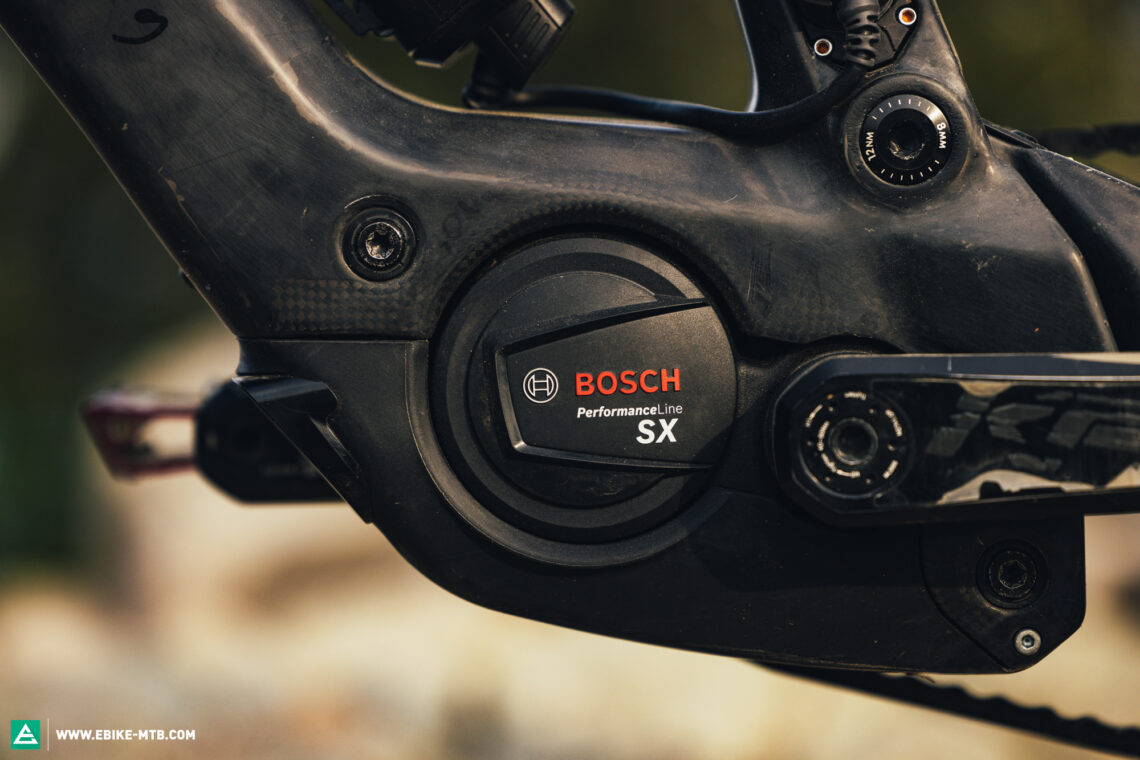
With the launch of the Performance Line SX motor early this summer, Bosch celebrated their debut in the light motor segment – or at least we thought so! However, Bosch admittedly failed to get across the motor’s true potential and intentions, which could be partly due to the German manufacturer’s modesty, and partly due to the fact that the motor only shows its true potential in practice. Be that as it may, so far Bosch focused more on powerful drive systems like the Performance Line CX, which is the flagship model in their full-fat motor range. Now the new Performance Line SX places itself right below the CX. Although smaller and significantly lighter than all previous Bosch ebike motors, it’s still bigger and beefier than its direct competitors, the TQ HPR50 and FAZUA Ride 60. The special thing about the new Bosch Performance Line SX is that it fits both in the full-power and light categories, effectively blurring the line between two segments, at least on paper. But how does it fare in real life?
At 55 Nm, the SX churns out 30 Nm less torque than the CX, but delivers the same 600 watts peak power – twice as much as the TQ HPR50. Despite the reduced torque, the Performance SX can easily play with the big boys.
The Bosch Performance Line SX covers a wide range of applications and is aimed primarily at sporty riders. It’s a good match for light eMTB riders and urban commuters, as well as for gravel ebikes. As part of theBosch Smart System component ecosystem, the Performance Line SX drive ensures excellent connectivity and allows you to choose from a wide range of batteries, displays and remotes, which Bosch are constantly expanding. However, the German manufacturer doesn’t invest their money just in new motor developments, but also in their extensive service infrastructure, providing the biggest global ebike service network. According to Bosch, in Europe alone, the brand trains around 10,000 specialist dealers across 15 countries every year.
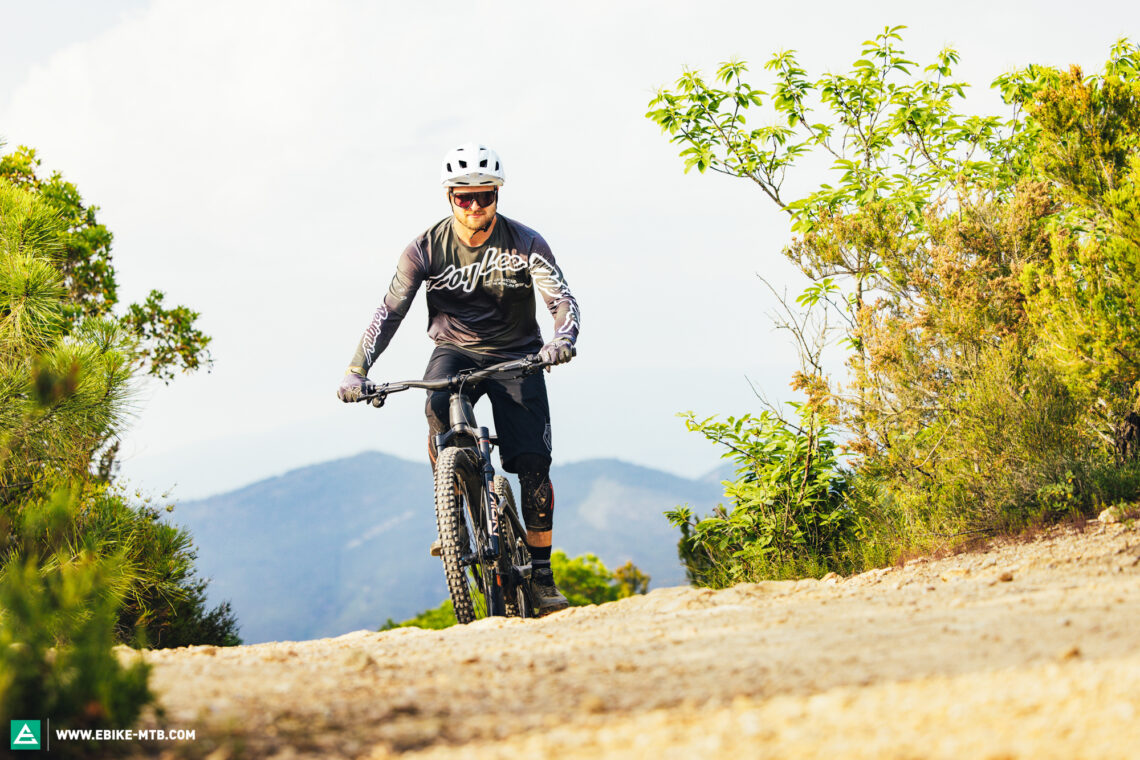
The Bosch Performance Line SX in detail – Borderliner or allrounder?
Even at first glance, it’s obvious that the new Bosch Performance Line SX is a close relative of the Performance CX drive. Despite being around 20% more compact than its bigger brother, it’s almost identical in terms of dimensions and design, and also shares the same black magnesium housing and Bosch’s iconic silver logo with red lettering. In purely technical terms, the SX and CX models are pretty similar too, except that the SX model forgoes a third transmission gear. Due to the different gear ratio, the SX is most efficient at higher pedalling cadences, meaning that it delivers its full power when pedalling fast. The simplified transmission allows the Bosch Performance SX to be slightly more compact than its full-fat counterpart (around 20% smaller) and also 900 g lighter, tipping the scales at 2.05 kg. While they were at it, Bosch also reduced the Q-factor from 178 mm to 160 mm to provide a more natural pedalling sensation, positioning the pedals closer together to replicate the feel of an analogue bike. That said, the SX is still significantly beefier than other Light e-MTB motors, giving bike manufacturers less freedom with frame designs than the compact TQ drive.
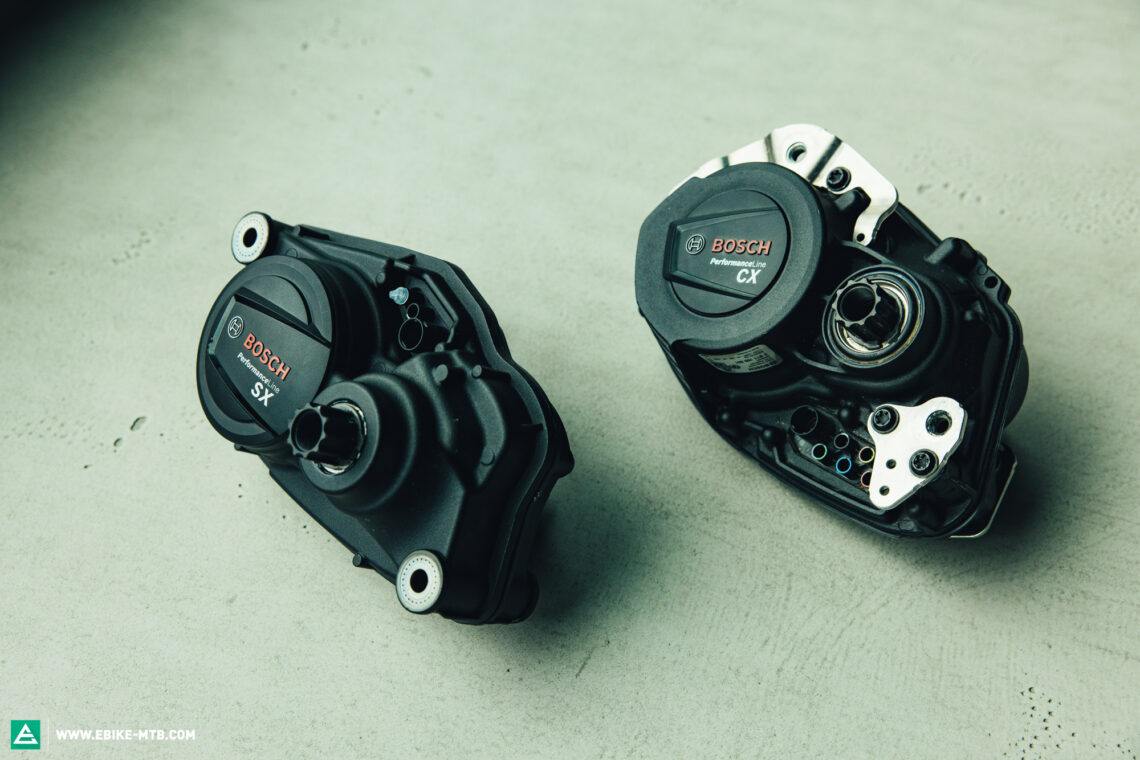
The Performance SX motor features four riding modes. Alongside Bosch’s traditional riding modes, there’s a new progressive mode called Sprint, which adapts the assistance according to the pedalling cadence. However, this was developed primarily for urban riding, providing up to 280 % assistance, and is meant to encourage you to work harder under your own steam while at the same time contributing to the sporty aspect of cycling. On e-mountainbikes, the new Sprint mode is replaced by another progressive mode called EMTB, which, like Turbo mode, provides up to 340 % support. Regardless of the setup, the Bosch Performance Line SX delivers up to 55 Nm of torque and 600 watts peak power, with the only difference being how quickly and easily you get there. The motor doesn’t provide its maximum power continuously, but modulates it dynamically through the software, which calculates a moving average of the rider’s own power input. As long as you provide a certain average physical effort, the motor assists you with up to 40 Nm torque. If you pedal harder and exceed your previous average, the motor churns out up to 55 Nm torque. While the FAZUA Ride 60 motor allows you to activate a time-limited Boost mode via the remote, the Performance Line SX does this automatically via the software and without a time limit.
As usual for Bosch, the eBike Flow app allows you to adjust the characteristics of the individual modes, including their dynamic behaviour, maximum torque, the strength of the support, and speed (within the framework of the legal regulations). To make things easier for beginners, the system explains the changes you’ve made and the effect they have on the riding experience – fantastic! Furthermore, the app provides training-specific data – like the amount of calories you burn while riding – and also includes a clever navigation function that takes into account the altitude gain and resulting battery range. As if that wasn’t enough, Bosch also offer optional security features like the eBike Alarm or eBike Lock, which give you extra peace of mind when you’re enjoying a well-deserved post-ride pint in the beer garden. The function disables the motor,and allows you to track the bike using the eBike Flow app via GPS signal. And while it might not replace a sturdy lock, it makes it harder for thieves to steal your bike. However, this only works in combination with the optional Connect module and requires you to subscribe to Bosch’s premium Flow+ plan, which costs € 4.99 per month or € 39.99 per year, though the first 12 months are for free.

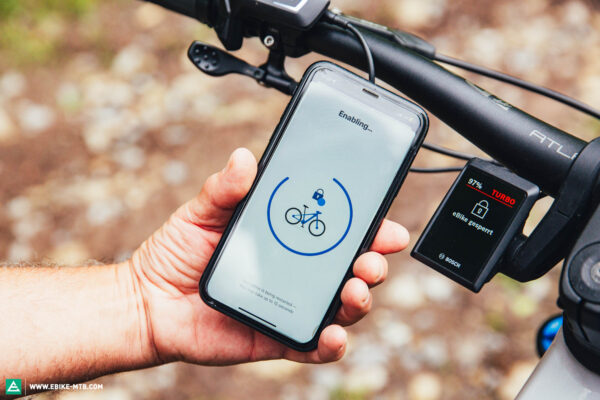
The Performance Line SX relies on Bosch’s modular Smart System ecosystem, thus benefiting from all of the manufacturer’s latest developments. However, only one battery was developed specifically for the SX drive, the CompactTube 400, which has 400 Wh capacity and weighs 2 kg. In this configuration, the core system including the battery and motor tips the scales at 4kg. Compared to the 430 Wh battery of the FAZUA Ride 60 motor system, the Bosch battery offers 30 Wh less but is also 300 g lighter. But be careful: considering individual characteristics in isolation, such as the weight of the motor, doesn’t make much sense. Different manufacturers use different design philosophies, which may redistribute the weight to different areas of the bike, as well as impacting on the weight and design of the bike itself. That said, we can tell you that the Bosch SX motor with a 400 Wh battery falls roughly into the same weight class as the FAZUA Ride 60 with a 430 Wh battery. The TQ HPR 50 with its 360 Wh battery, on the other hand, is lighter still, due to a combination of compact form factor and smaller battery capacity.

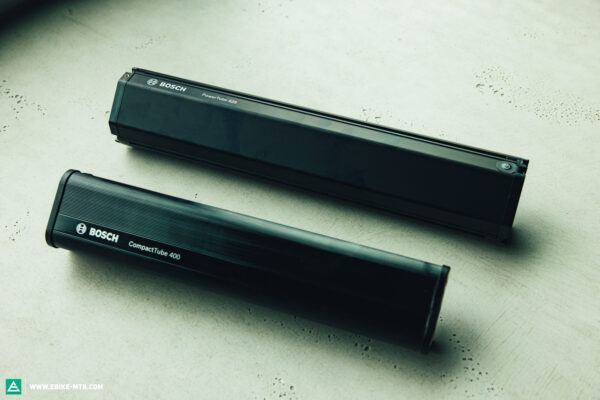
The Performance Line SX motor is also compatible with other Bosch Smart System batteries, like the PowerTube 625 and PowerTube 750, which have 625 Wh and 750 Wh capacity, respectively. Not only does this give bike manufacturers several configuration options, but also makes Bosch’s lightweight motor suitable for other applications other than classic Light eMTB concepts. While the same applies to the remotes, only some of them are suitable for full-on trail riding. True to the “less is more” motto, the combination of a Bosch Mini-Remote and top tube-integrated System Controller remains the most sensible choice for e-mountainbikes. Although the wireless remote and display only provide basic riding data such as the current support mode and battery charge status, this setup ensures a minimalist, clean look and intuitive operation, allowing the rider to focus on the trail ahead. If you want more data while riding, the bigger Bosch Kiox 300 and Kiox 500 displays are an interesting option, providing turn-by-turn directions with a basic breadcrumb trail when the navigation function is activated. That said, the standard Kiox mount positions the display right in front of the stem, where it’s exposed to impacts in the event of a crash.
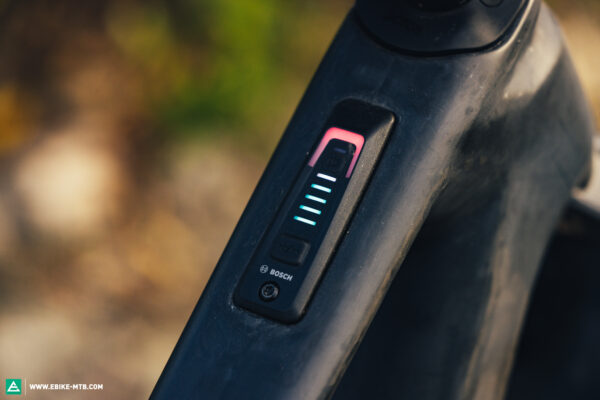
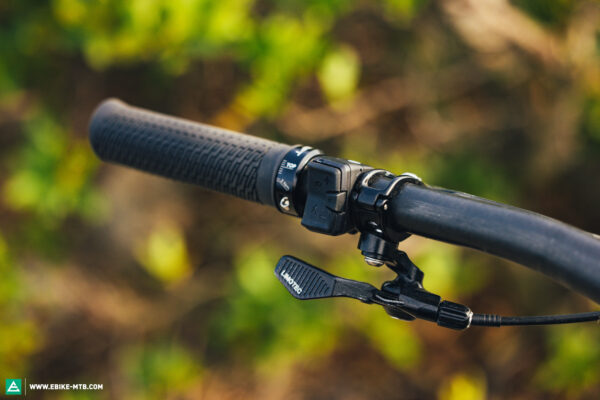
Bosch Performance Line SX: heavy light motor or light full-power eMTB drive?
When climbing in Turbo mode with the standard setting, the Bosch Performance Line SX packs a punch, pushing harder than the FAZUA Ride 60 and TQ HPR50 motors. That said, the SX doesn’t feel as abrupt as the CX, providing a very natural ride feeling instead, and fading out extremely smoothly at the 25 km/h threshold. On the other hand, Bosch’s light drive requires a slightly higher cadence to fully develop its power, but supports you willingly once it gets there, even on steeper climbs. If you ride alongside a full-fat e-MTB and the gradient suddenly increases, you can compensate for the lack of torque by shifting into an easier gear that requires you to pedal at a higher cadence. In typical Bosch fashion, the dynamic eMTB mode is sensibly tuned, with its sustained response allowing you to push over roots and small steps without having to pedal. If you’re in the wrong gear or have to pedal slowly in narrow climbing sections, the Performance Line SX requires significantly more input than the CX model – although still less than the TQ HPR 50 and the FAZUA Ride 60. This also became evident in our tests at the Velotech lab. The Bosch Performance Line SX knows no limits, providing support even at very high cadences, where the most of its competitors run out of steam.
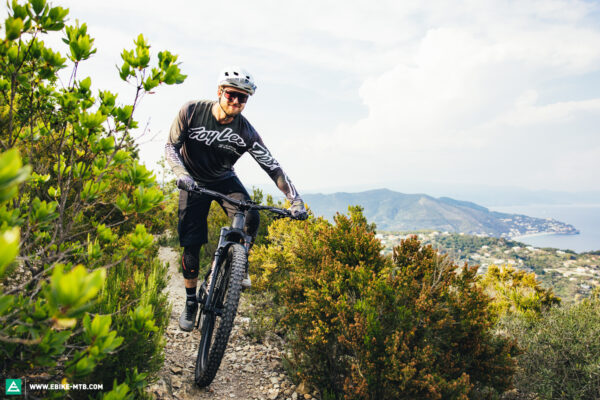

While visually, the Bosch Performance Line SX might not be as discreet as other light motors, it is incredibly quiet. When pedalling at low cadences, it’s significantly quieter than the FAZUA Ride 60 and Specialized SL1.2, producing roughly the same noise level as the TQ HPR50 drive. With increasing cadences and higher loads, the motor emits a faint whirring sound, but this is quickly drowned out by surrounding ambient noises.
If you aren’t looking for a shuttle replacement and don’t mind working a bit harder, the Bosch Performance Line SX is an excellent choice. Provided you’re pedalling at the right cadence to compensate for the lower torque, the SX drive delivers up to 340% assistance. If you know how to use your gears and tend to ride in the lowest support levels with full-power motors, you’ll love the SX drive – provided you don’t spend most of your time conquering Alpine peaks. Especially in conjunction with the 625 Wh battery, it’s a very exciting alternative to the bigger Performance Line CX motor, which is a whopping 900 g heavier. While Bosch’s light motor offers almost the same possibilities as a full-fat drive, the system’s core components including the drive and battery, weigh significantly less.
Our conclusions about the Bosch Performance SX motor.
The Bosch Performance Line SX is neither the lightest nor the slimmest e-bike motor out there. That said, it successfully bridges the gap between full power motors and light e-MTB drives, delivering more power than any of the other light motors, while offering a lighter, more natural ride feeling than the full-power options. Thanks to the dynamic power control, sporty riders can squeeze out every last drop of power. Unlike many of its light competitors, the SX offers a tremendous trail performance and countless configuration options, while Bosch’s reliable global service network is second to none. One thing’s for sure: the SX will give its bigger CX sibling a lot of competition in the future!
Tops
- Natural ride feeling
- High level of connectivity
- Silent
Flops
- Bulkier than its direct competitors, it’s harder to integrate
- Little support at lower pedalling cadences
For more information, visit bosch-ebike.com
The test field
For an overview of our big ebike motor comparison test click here
All ebike motors in test: Bosch Performance Line CX (Click for review) | Bosch Performance Line CX Race (Click for review) | Bosch Performance Line SX | Brose Drive S Mag (Click for review) | FAZUA Ride 60 (Click for review) | GIANT SyncDrive Pro2 (Click for review) | Panasonic GX Ultimate (Click for review) | Pinion MGU E1.12 (Click for review) | Shimano EP801 (Click for review) | Specialized SL 1.2 (Click for review) | Specialized 2.2 (Click for review) | TQ HPR 50 | Yamaha PW-X3 (Click for review)
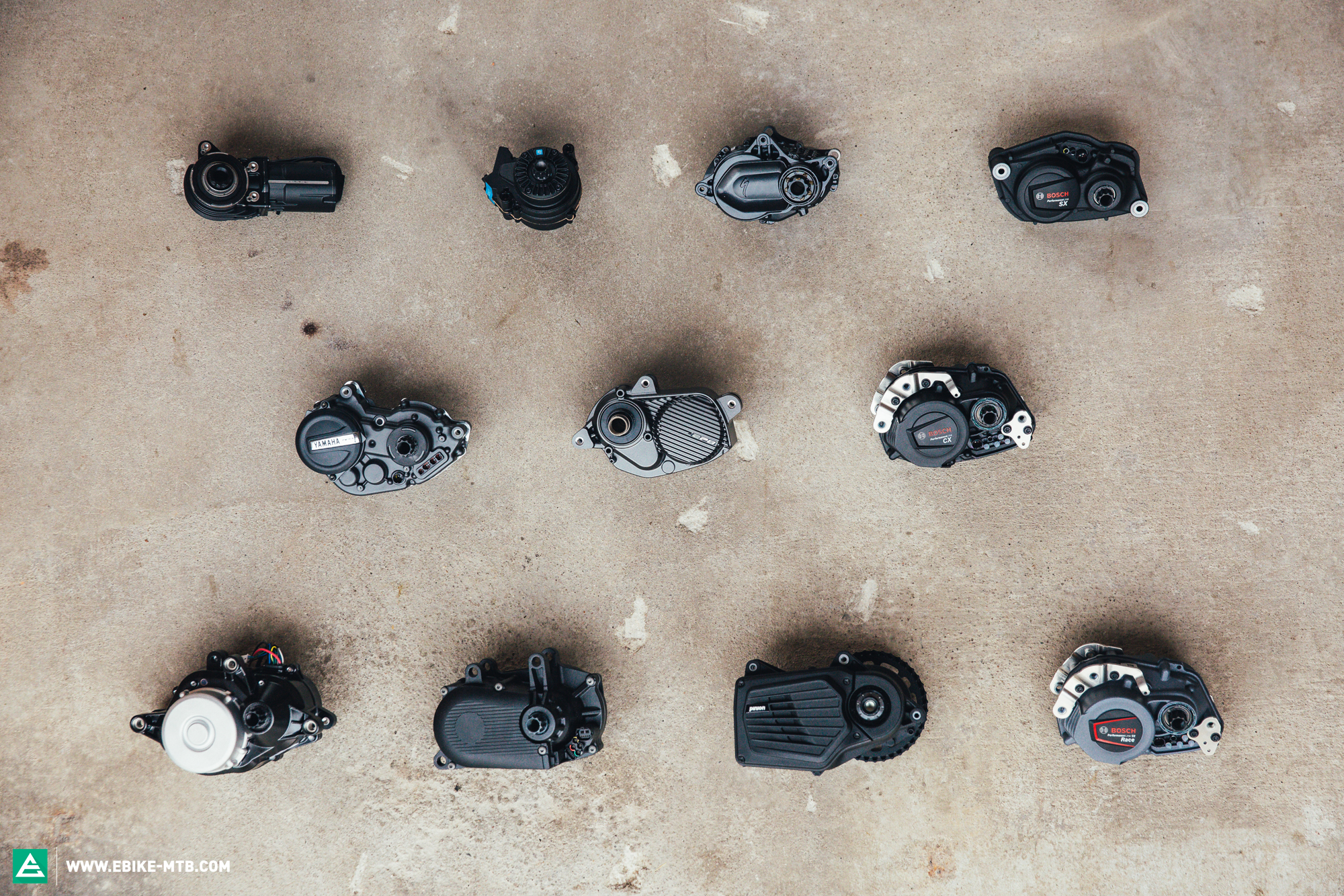
Did you enjoy this article? If so, we would be stoked if you decide to support us with a monthly contribution. By becoming a supporter of E-MOUNTAINBIKE, you will help secure a sustainable future for high-quality cycling journalism. Click here to learn more.
Words: Mike Hunger Photos: Various




